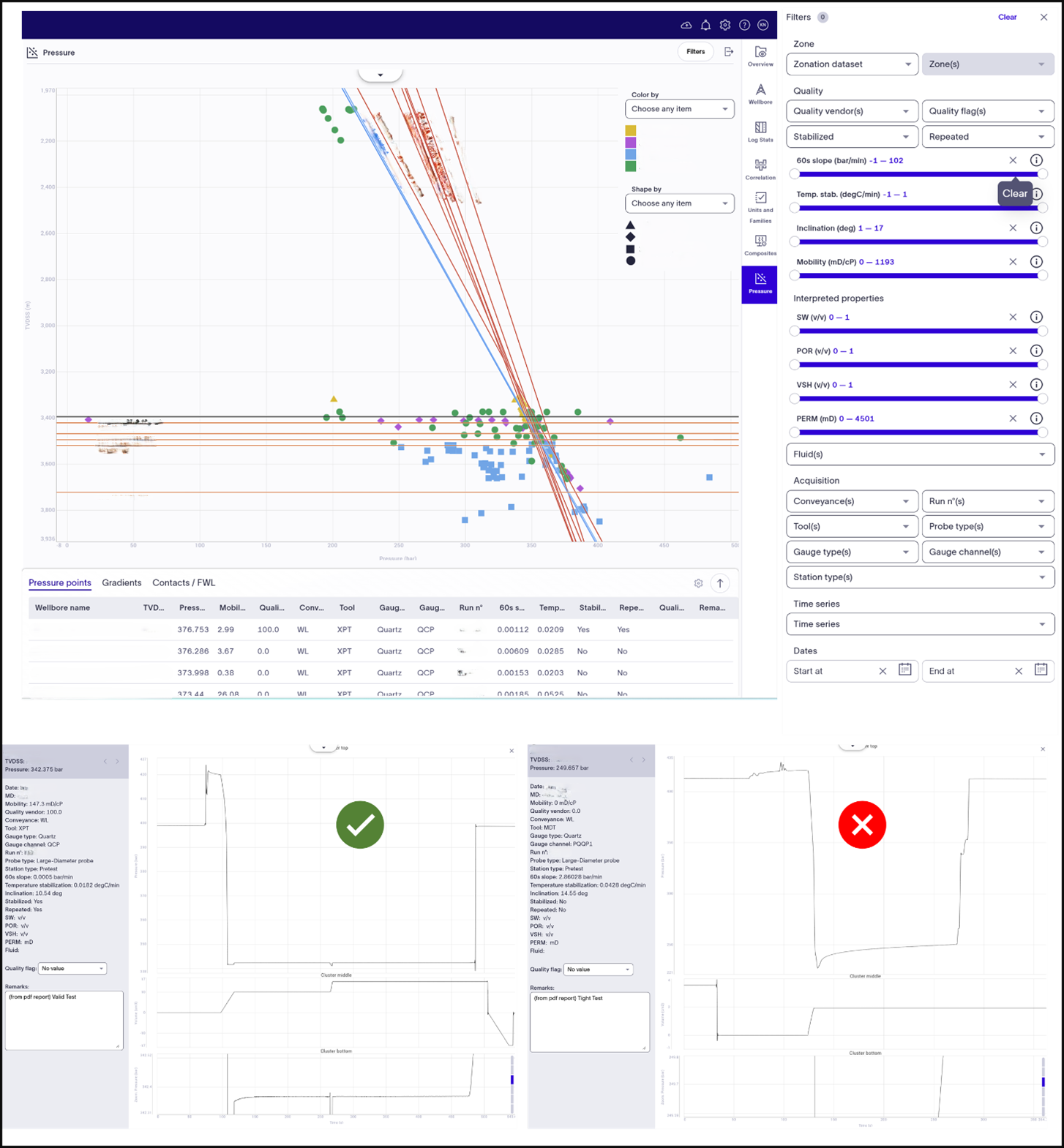Presenter
Knut Arne Birkedal from Aker BP
Co-authors
Kjetil Westre, SLB, Håvard K. Simonsen, Aker BP
Abstract
- Introduction
Accurate evaluation of formation pressure, fluid gradients and contacts are critical for understanding reservoir compartmentalization, connectivity, fluid flow and in-place volume estimates. Complex fields with faults and different fluid gradients add further requirements to the process and failing to properly account for uncertainties may have detrimental effects. Historically, pressure data has been scattered across individual applications, projects, vintages, and formats – resulting in siloed workflows and inconsistent practices. This fragmentation makes it difficult to establish a standardized approach to pressure data management and interpretation across the organization. In addition, there is often a disconnect between the raw pressure measurements and the interpreted results. Without lineage back to the raw time-series data, it becomes cumbersome to assess the reliability and context of the interpretation. This lack of traceability undermines confidence in the data and creates barrier to consistent high-quality pressure analysis. Furthermore, the absence of a collaborative interface for pressure data analysis makes it difficult for cross-disciplinary teams to work efficiently, limiting shared understanding, coordination and informed decision-making in field development planning.
- Procedure
To address these challenges, Aker BP, in collaboration with SLB, have developed a cloud native application for pressure and gradient analysis within Wellbore Interpretation application in DELFI. Built on the OSDU data platform, this solution centralizes interpreted pressure points in a single, accessible interface, preserving full data lineage and quality metadata. This ensures that end-users can trust the interpretation, understand its origin, and work with consistent and validated datasets. A key product is the PRESS_BEST dataset, created through automated OSDU ingestion routines powered by data analytics and machine learning The cloud application incorporates several essential and innovative features that enhance both user experience and the overall quality of interpretation. 1. Streamlined access to all pressure data 2. A collaborative environment enabling multiple users to access and enrich shared datasets 3. Automated evaluation of quality metrics, including pressure repeatability and stability 4. A comprehensive uncertainty framework addressing both gauge-specific and survey related uncertainties
- Results/Observations
The North Sea field development is identified as a structurally complex reservoir. Multiple faults and coal layers act as barriers to fluid movement and pressure. The precise nature of connectivity remains undetermined. Four appraisal wells have demonstrated lateral variations in hydrocarbon fluid density and gradients, along with capillary discontinuities within the depth domain. Aquifer connectivity continues to present uncertainty, stemming from limited and inconsistent water pressure data, which has necessitated a baseline assumption of varying aquifer pressures across different segments. The introduction of the new pressure platform offers several advantages that have significantly contributed to addressing uncertainties within the field: 1. The Graphical User Interface (GUI) is user-friendly and enables filtering based on associated metadata from the PRESS_BEST OSDU dataset. For instance, well log data can be sorted by high water saturation pressure points to facilitate aquifer analysis 2. The use of custom stability and repeatability filtering criteria ensures gradient interpretations are consistently derived from high-quality data. 3. The platform requires interpreters to base assessments on data from single well, single run, single gauge, and single probe, thereby reducing both pressure and depth uncertainty, with subsequent maximized reliability of interpretations and overall data quality. Figure 1 presents unfiltered data from four appraisal wells in the field. The presence of tight and supercharged pressure points adds complexity to the interpretation process, but direct access to raw time-series data and metadata in OSDU enables systematic quality filtering. Figure 2 displays data filtered for stability. By including survey uncertainty, a shared aquifer gradient was identified as a plausible scenario. This information allowed the team to prepare contingency plans for field development, where short turnaround times are required after the initial geopilot. Having contingent well trajectories based on the application of this pressure has contributed to project planning, hence adding value to the field development process.
- Conclusion
The project demonstrates how digital technologies unlock value by enabling easy access to high-quality, traceable and well-structured data. By connecting subsurface domains through a collaborative digital platform, a new industry standard for efficient pressure analysis with improved accuracy in field development is established.

Biography
Can follow up with this if required.